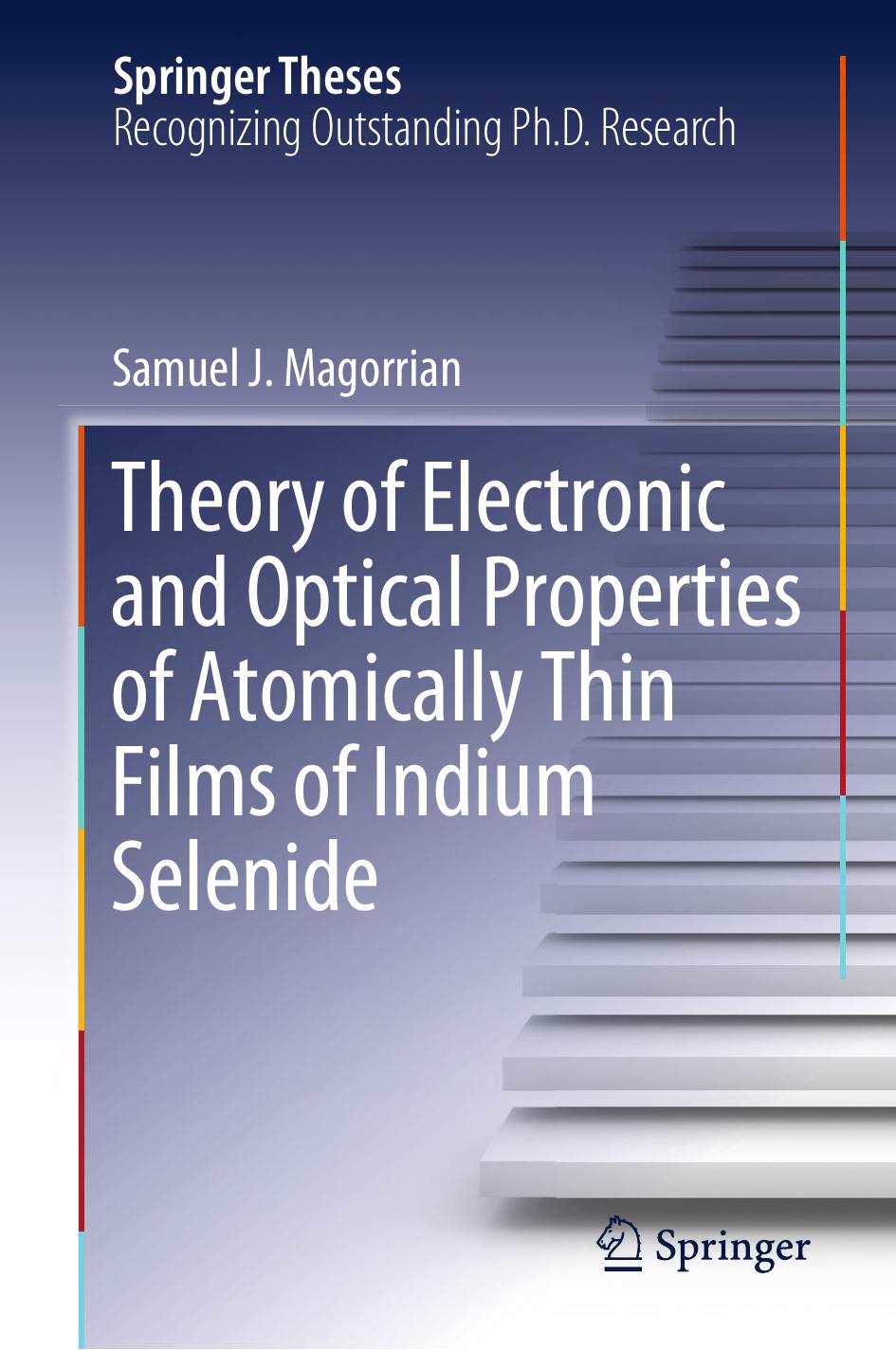Theory of Electronic and Optical Properties of Atomically Thin Films of Indium Selenide by Samuel J. Magorrian

Author:Samuel J. Magorrian
Language: eng
Format: epub, pdf
ISBN: 9783030257156
Publisher: Springer International Publishing
Figure 3.3 summarises the few-layer (up to 10 layers) gaps obtained from scissor-corrected DFT calculations, from the HkpTB model with scissor and gap correction methods as described above, and from the tight-binding model of Chap. 2. The scissor-corrected DFT and HkpTB model are almost in agreement, with a small discrepancy arising between them as the HkpTB model struggles to replicate the light band-edge effective mass from DFT in the bulk, and consequently does not exactly reproduce the discretised few-layer bands and gaps. The gap correction method gives slightly smaller gaps for few-layer InSe, as expected from the increased effective mass in the bulk resulting from this method. Finally, motivated by the corrections applied here, we revisit the question of how to fit the tight-binding model in Chap. 2. The finding here is that while it is better to use a corrected monolayer parameter set, attempting to fit interlayer hopping parameters to scissor-corrected DFT—as was done for the tight-binding model—can give misleading results. We therefore compare the scissor-corrected tight-binding as presented in Chap. 2 with a ‘gap-corrected tight-binding model’—i.e. using the ‘S.C.’ monolayer tight-binding parameters from Table 2.1, but with the interlayer hops taken as those fitted to uncorrected DFT in Table 2.3. We see in Fig. 3.3 that while the scissor-corrected tight-binding model gives notably smaller gaps at larger numbers of layers, the gap-corrected tight-binding model very closely tracks the chosen HkpTB model result. While the scissor-corrected tight-binding model of Chap. 2 does not reproduce the expected gap for , the gap-corrected tight-binding model gets much closer, with a fit to Eq. (2.11) giving a limiting value eV as well as an increased out-of-plane reduced mass of .1 The ‘TB G.C.’ parameter set may therefore be considered a useful choice.
Download
Theory of Electronic and Optical Properties of Atomically Thin Films of Indium Selenide by Samuel J. Magorrian.pdf
This site does not store any files on its server. We only index and link to content provided by other sites. Please contact the content providers to delete copyright contents if any and email us, we'll remove relevant links or contents immediately.
The Complete Stick Figure Physics Tutorials by Allen Sarah(7135)
Secrets of Antigravity Propulsion: Tesla, UFOs, and Classified Aerospace Technology by Ph.D. Paul A. Laviolette(4974)
Thing Explainer by Randall Munroe(3782)
The River of Consciousness by Oliver Sacks(3412)
The Order of Time by Carlo Rovelli(3072)
How To by Randall Munroe(2911)
I Live in the Future & Here's How It Works by Nick Bilton(2839)
A Brief History of Time by Stephen Hawking(2819)
What If?: Serious Scientific Answers to Absurd Hypothetical Questions by Randall Munroe(2542)
The Great Unknown by Marcus du Sautoy(2532)
Midnight in Chernobyl by Adam Higginbotham(2384)
Blockchain: Ultimate Step By Step Guide To Understanding Blockchain Technology, Bitcoin Creation, and the future of Money (Novice to Expert) by Keizer Söze(2379)
Networks: An Introduction by Newman Mark(2264)
The Meaning of it All by Richard Feynman(2213)
Easy Electronics by Charles Platt(2204)
The Tao of Physics by Fritjof Capra(2162)
Midnight in Chernobyl: The Untold Story of the World's Greatest Nuclear Disaster by Adam Higginbotham(2074)
When by Daniel H Pink(2020)
Introducing Relativity by Bruce Bassett(2015)
